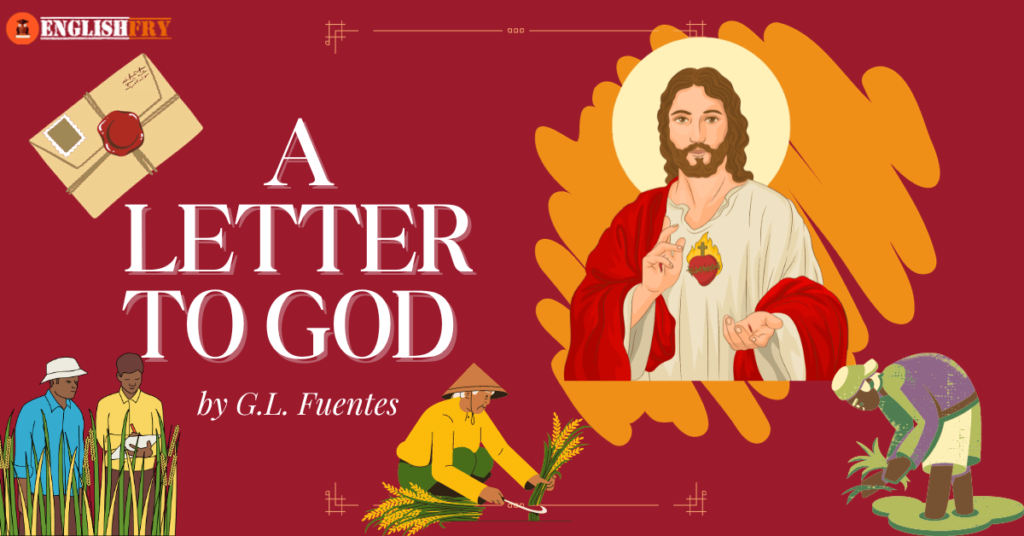Table of Contents
ToggleAbout Ruskin Bond

Ruskin Bond is an Indian writer who has won the Sahitya Akademi Award. He wrote many children’s books and worked as a journalist in Delhi and Dehradun. He moved to Mussoorie and started freelance writing in 1963. His articles were published in magazines like The Pioneer, The Leader, The Tribune, and The Telegraph. He has written over 300 short stories, essays, and novels and over 30 children’s books. He also wrote two autobiographical books, Scenes from a Writer’s Life and The Lamp is Lit; Leaves from a Journal. Some of his notable works include Blue Umbrella, A Flight of Pigeons, and Funny Side Up. His works have been adapted for television and film.
The movie 7 Khoon Maaf and the movie Junoon are based on Ruskin Bond’s book A Flight of Pigeons.
A Short Monsoon Diary Summary
In this chapter are the extracts from the diary of the well-known writer and nature lover Ruskin Bond. The author describes the flora and fauna for the duration of the monsoon in Mussoorie. He wrote those experiences day-wise.
24th June is the first day of the monsoon mist. The mist has included the hills and also quietened the birds. He can hear Bijju calling his sister and feel that he is strolling. However, because of mist, he’s not able to peer Bijju. The author says that the mist has modified the Mussoorie hills in ways. Firstly, one can not see the hills and secondly can not hear the birds chirping.
On 25th June, the rain is heat and humid and is accordingly comfortable, in contrast to the iciness rain. The plant life are blooming. He describes the hill station as ‘A Paradise that would had been’.
On 27th June, possible see leeches acting due to the monsoon. A leopard turned into additionally visible stealing puppies and different animals. Some new birds like minivets also can be seen. Minivets are brilliant colored birds and take a seat silently a number of the leaves. One can also see some seasonal plants blooming.
On 2nd August it has rained all night. The sound of the rain on the tin roof delights him. He feels he’s untouched but is in contact with the rain.
On 3rdAugust, the rain stops and there may be sunshine. Animals, birds, and human beings are all out in open sunshine. The author is pleased to hear a tune of a whistling thrush coming from a distance.
On 12th August he writes that it is been raining non-prevent for extra than per week. Everything is damp however now not bloodless. Flowers have blanketed the hills. If one wishes to exit, he needs to hold an umbrella.
On 31st August the increase in monsoon can be seen anywhere. The seeds of the cobra lily are becoming red which is an indication that the rains are coming to an give up. Snakes and rodents have taken shelter in attics, roofs, and godowns as the holes are complete of rainwater.
It’s October 3rd. This 12 months the monsoon become much longer than normal. Usually, it begins in the closing week of June and maintains until the quit of August. Now, the winter rain has started.
On 26th January, the author wrote a poem approximately iciness rain. He says that the wintry weather rain makes him experience lonely as a friend who turned into staying with him has left. He additionally says that there are not any flowers in winter rain as there have been in monsoon rains.
23rd March and is the culmination of winter. One can see a rainbow in the clear sky after a hailstorm.

इस अध्याय में प्रसिद्ध लेखक और प्रकृति प्रेमी रस्किन बॉन्ड की डायरी के अंश हैं। लेखक ने मसूरी में मानसून की अवधि के लिए वनस्पतियों और जीवों का वर्णन किया है। उन्होंने उन अनुभवों को दिन के हिसाब से लिखा. 24 जून मानसून धुंध का पहला दिन है। धुंध ने पहाड़ियों को भी अपने आगोश में ले लिया है और पक्षियों को भी शांत कर दिया है। वह बिज्जू को अपनी बहन को बुलाते हुए सुन सकता है और महसूस कर सकता है कि वह टहल रहा है। हालाँकि, धुंध के कारण वह बिज्जू को नहीं देख पा रहा है।
लेखक का कहना है कि धुंध ने मसूरी की पहाड़ियों को कई तरह से बदल दिया है। एक तो पहाड़ियाँ दिखाई नहीं देतीं और दूसरा पक्षियों की चहचहाहट सुनाई नहीं देती।
25 जून को, बर्फ़ीली बारिश के विपरीत, बारिश गर्म और आर्द्र होती है और तदनुसार आरामदायक होती है। पौधे खिल रहे हैं. वह हिल स्टेशन का वर्णन ‘एक स्वर्ग जो होता’ के रूप में करता है।
27 जून को मानसून के कारण जोंकें सक्रिय हो सकती हैं। एक तेंदुआ पिल्लों और अन्य जानवरों को चुराता हुआ भी दिखाई दिया। कुछ नए पक्षी जैसे मिनीवेट भी देखे जा सकते हैं। मिनीवेट चमकीले रंग के पक्षी हैं और कुछ पत्तियों पर चुपचाप बैठे रहते हैं। कुछ मौसमी पौधों को खिलते हुए भी देखा जा सकता है।
2 अगस्त को पूरी रात बारिश हुई है. टिन की छत पर बारिश की आवाज़ उसे प्रसन्न करती है। उसे लगता है कि वह अछूता है लेकिन बारिश के संपर्क में है।
3 अगस्त को बारिश रुक जाएगी और धूप निकल सकती है। पशु, पक्षी और मनुष्य सभी खुली धूप में हैं। लेखक दूर से आती हुई सीटी बजाने वाली थ्रश की धुन सुनकर प्रसन्न होता है।
12 अगस्त को वह लिखते हैं कि एक सप्ताह से अधिक समय से बिना रुके बारिश हो रही है। सब कुछ नम है लेकिन ठंडा नहीं है. पहाड़ों पर फूलों की चादर बिछ गई है। अगर कोई बाहर निकलना चाहता है तो उसे छाता पकड़ना होगा। 31 अगस्त को मॉनसून में बढ़ोतरी कहीं भी देखी जा सकती है. कोबरा लिली के बीज लाल हो रहे हैं जो इस बात का संकेत है कि बारिश ख़त्म होने वाली है। बारिश के पानी से गड्ढे भर जाने के कारण सांपों और चूहों ने अटारियों, छतों और गोदामों में शरण ले ली है।
यह 3 अक्टूबर है. इस 12 महीने मानसून सामान्य से काफी लंबा हो जाता है। आमतौर पर, यह जून के अंतिम सप्ताह में शुरू होता है और अगस्त के अंत तक जारी रहता है। अब, सर्दियों की बारिश शुरू हो गई है।
26 जनवरी को लेखक ने बर्फ़ीली बारिश के बारे में एक कविता लिखी। उनका कहना है कि सर्द मौसम की बारिश उन्हें अकेलेपन का अनुभव कराती है, क्योंकि जो दोस्त उनके साथ रहा, वह चला गया है। उनका यह भी कहना है कि सर्दियों की बारिश में उतने फूल नहीं होते जितने मानसून की बारिश में होते थे।
23 मार्च और सर्दियों का चरम है। ओलावृष्टि के बाद साफ आसमान में इंद्रधनुष देखा जा सकता है।

এই অধ্যায়ত সুপৰিচিত লেখক তথা প্ৰকৃতিপ্ৰেমী ৰাস্কিন বণ্ডৰ ডায়েৰীৰ উদ্ধৃতিসমূহ উল্লেখ কৰা হৈছে। লেখকে মুছুৰীত বাৰিষাৰ সময়ছোৱাত উদ্ভিদ আৰু প্ৰাণীৰ বৰ্ণনা কৰিছে। সেই অভিজ্ঞতাবোৰ তেওঁ দিনে দিনে লিখিছিল।
২৪ জুন তাৰিখে বাৰিষাৰ কুঁৱলীৰ প্ৰথম দিন। কুঁৱলীয়ে পাহাৰবোৰকো সামৰি লৈছে আৰু লগতে চৰাইবোৰকো নিস্তব্ধ কৰি তুলিছে। বিজুৱে ভনীয়েকক ফোন কৰা শুনি সি খোজ কাঢ়ি থকা যেন অনুভৱ কৰে। অৱশ্যে কুঁৱলীৰ বাবেই সি বিজ্জুক পিয়াৰ কৰিব পৰা নাই। লেখকে কয় যে কুঁৱলীই মাছুৰী পাহাৰবোৰক কিছু পৰিমাণে পৰিৱৰ্তন কৰিছে। প্ৰথমতে পাহাৰবোৰ দেখা নাপায় আৰু দ্বিতীয়তে চৰাইৰ চিঞৰ-বাখৰ শুনা নাযায়।
২৫ জুনত বৰষুণ গৰম আৰু আৰ্দ্ৰ হয় আৰু সেই অনুসৰি আৰামদায়ক হয়, বৰফৰ দৰে বৰষুণৰ বিপৰীতে। উদ্ভিদ জীৱন ফুল ফুলিছে। তেওঁ পাহাৰীয়া ষ্টেচনটোক ‘A Paradise that would had been’ বুলি বৰ্ণনা কৰিছে।
২৭ জুনত বাৰিষাৰ বাবে লিচবোৰে কাম কৰা দেখা সম্ভৱ। এটা নাহৰফুটুকী অতিৰিক্তভাৱে দৃশ্যমান চুৰি কুকুৰ পোৱালি আৰু বিভিন্ন জীৱ-জন্তুলৈ পৰিণত হ’ল। মিনিভেটৰ দৰে কিছুমান নতুন চৰাইও দেখা যায়। মিনিভেটবোৰ উজ্জ্বল ৰঙৰ চৰাই আৰু নিৰৱে কেইবাখনো পাতৰ আসন লয়। কিছুমান ঋতুভিত্তিক গছ-গছনিও ফুলি থকা দেখা যায়।
২ আগষ্টত গোটেই ৰাতি বৰষুণ পৰিছে। টিনৰ চালত বৰষুণৰ শব্দই তেওঁক আনন্দিত কৰে। সি অনুভৱ কৰে যে সি অস্পৃশ্য যদিও বৰষুণৰ সংস্পৰ্শত আছে। ৩আগষ্টত বৰষুণ বন্ধ হৈ যায় আৰু ৰ’দ হ’ব পাৰে। জীৱ-জন্তু, চৰাই, মানুহ সকলো মুকলি ৰ’দত বাহিৰত। দূৰৰ পৰা হুইচেল মাৰি থকা থ্ৰাছৰ সুৰ এটা শুনি লেখক আনন্দিত হৈছে।
১২ আগষ্টত তেওঁ লিখিছে যে প্ৰতি সপ্তাহতকৈ অতিৰিক্ত সময় নন-প্ৰিভেণ্ট বৰষুণ দি আহিছে। সকলো ভিজা অৱশ্যে এতিয়া ৰক্তহীন নহয়। ফুলে পাহাৰবোৰ কম্বল কৰি পেলাইছে। যদি কোনোবাই ওলাই যাব বিচাৰে তেন্তে ছাতি এটা ধৰিব লাগিব।
৩১ আগষ্টত বাৰিষাৰ বৃদ্ধি যিকোনো ঠাইতে দেখা যায়। কোব্ৰা লিলিৰ বীজ ৰঙা হৈ আহিছে যিটোৱে বৰষুণে হাৰ মানিবলৈ অহাৰ ইংগিত দিয়ে। গাঁতবোৰ বৰষুণৰ পানীৰে সম্পূৰ্ণ হোৱাৰ বাবে আট্টিক, চাল, গুডাউনত আশ্ৰয় লৈছে সাপ আৰু ৰোডেণ্টে।
৩ অক্টোবৰ৷ এই ১২ মাহত বাৰিষা স্বাভাৱিকতকৈ বহু বেছি দীঘলীয়া হৈ পৰে। সাধাৰণতে জুন মাহৰ শেষ সপ্তাহত আৰম্ভ হয় আৰু আগষ্ট মাহৰ বন্ধ হোৱালৈকে চলি থাকে। এতিয়া শীতকালীন বৰষুণ আৰম্ভ হৈছে।
২৬ জানুৱাৰীত লেখকে আনুমানিক বৰফৰ বৰষুণৰ দৰে এটা কবিতা লিখিছিল। তেওঁ কয় যে শীতকালীন বতৰৰ বৰষুণে তেওঁক অকলশৰীয়া অনুভৱ কৰায় কাৰণ তেওঁৰ লগত থাকিবলৈ ৰূপান্তৰিত হোৱা বন্ধু এজন গুচি গৈছে। তেওঁ অতিৰিক্তভাৱে কয় যে বাৰিষাৰ বৰষুণৰ দৰে ফুলৰ দৰে শীতকালীন বৰষুণতো ফুল নাথাকে।
২৩ মাৰ্চ আৰু শীতকালৰ শিখৰ। শিলাবৃষ্টিৰ পিছত স্বচ্ছ আকাশত ৰামধেনু দেখা যায়।
A Short Monsoon diary question answer
Qus 1. Why is the author not able to see Bijju ?
Ans. The author is not able to see Bijju because of the mist all around.
Qus 2. What are the two ways in which the hills appear to change when the mist comes up ?
Ans. When the mist arrives, the birds go silent. It also hides the highlands in solitude and darkness.
Qus 3. When does the monsoon season begin and when does it end? How do you prepare to face the monsoon?
Ans. The monsoon season begins at the end of June and ends in the first week of October. We buy umbrellas and raincoats to face the monsoon.
Qus 4. Which hill station does the author describe in this diary entry?
Ans. The author describes Mussoorie Hill station in this diary entry.
Qus 5. For how many days does it rain without stopping? What does the author do on these days?
Ans. It rains for eight or nine days without stopping. The author has nowhere to go. He paces the room and looks out of the window at a few bobbling umbrellas.
Qus 6. Where do the snakes and rodents take shelter? Why?
Ans. The snakes and rodents take shelter in roofs, attics, and godowns. They do so because their holes and burrows are flooded with rainwater.
Qus 7. What did the author receive in the mail?
Ans. The author received a cheque in the mail.
Qus 8. Why did the grandmother ask the children not to kill the Chuchundar?
Ans. According to the grandmother, Chuchundars are lucky and they bring money. So she asked the children not to kill the Chuchundars.
Qus 9. What signs do we find in Nature which show that the monsoons are about to end?
Ans. The seeds of the cobra lily are turning red which shows that the monsoons are about to end.
Qus 10. Why has the writer used the word, ‘springing’?
Ans. The writer has used the word ‘springing’ because the water was leaking with the speed three the corrugated tin roof.
Qus 11. How is the writer untouched by the rain?
Ans. The writer is untouched by rain because he is in a room.
Qus 12. How is the writer in touch with the rain at the same time?
Ans. The writer hears the sound of rainfall on his tin roof. So he is in touch with the rain.
Qus 13. Mention a few things that can happen when there is endless rain for days together.
Ans. People spend most of their time indoors. Some people love sleeping in extra time. Children enjoy indoor games. Ladies spend the most of their time in the kitchens making pakoras, tea, coffee, and cutlets for the family. The family is in a good mood, and they are generous.
Qus 14. What is the significance of cobra lily in relation to the monsoon season, its beginning and end?
Ans. When the cobra lily first appears it symbolizes the start of the monsoon season. When its seeds turn red, it means the monsoon season is ending.
A short monsoon diary mcq
- What is the significance of the mist on June 24?
- It brings warmth and humidity
- It conceals the hills and brings silence
- It signals the arrival of winter rain
- It attracts brightly colored birds
Correct Answer: B. It conceals the hills and brings silence
- How does the mist provide privacy, according to the text?
- By creating a cozy atmosphere
- By concealing the hills
- By muffling sounds
- By attracting seasonal visitors
Correct Answer: C. By muffling sounds
- What does the mist conceal according to the author on June 25?
- The hills
- The cobra lily
- The bank and post office
- The scarlet minivets
Correct Answer: A. The hills
- What is the description of the hill station and valley in one sentence?
- A cold and high-altitude paradise
- A misty and melancholic paradise
- A silent and leafy paradise
- A warm and humid paradise
Correct Answer: B. A misty and melancholic paradise
- What new arrivals are mentioned on June 27?
- Snow at higher altitudes
- Leopard and leeches
- Drongos and minivets
- Oak tree and ferns
Correct Answer: B. Leopard and leeches
- Why did the leopard flee on June 27?
- It was scared of the rain
- It was attacked by Bijju’s mother
- It lifted a dog near the school
- It was chased by drongos
Correct Answer: B. It was attacked by Bijju’s mother
- What emerges like a dark sweet secret on August 3?
- Endless rain
- The raindrops from feathers
- The tinkle of cowbells
- The song of the whistling thrush
Correct Answer: D. The song of the whistling thrush
- What is the author’s reaction to the rain on August 12?
- Joyful
- Melancholic
- Frustrated
- Indifferent
Correct Answer: C. Frustrated
- What is the significance of the red turning cobra lily seeds on August 31?
- Arrival of leopard
- Arrival of winter rain
- End of monsoon
- Appearance of scarlet minivets
Correct Answer: C. End of monsoon
- What happens to snakes and rodents during the monsoon, according to the text?
- They become aggressive
- They take shelter in roofs
- They flood out of their holes
- They attack drongos
Correct Answer: B. They take shelter in roofs
- Why does the grandmother advise not to kill the shrew on August 31?
- Shrews are rare species
- Chuchundars bring money
- Shrews are lucky
- Chuchundars are aggressive
Correct Answer: B. Chuchundars bring money
- What does the author receive in the mail on August 31?
- A large cheque
- A letter from a friend
- A small cheque
- A package from the bank
Correct Answer: C. A small cheque
- What marks the transition from monsoon to winter rain on October 3?
- Snow at higher altitudes
- End of monsoon
- Evening hailstorm
- Beautiful golden light
Correct Answer: C. Evening hailstorm
- What does the author describe on January 26 in the hushed silence of the house?
- The mist
- The loneliness
- The rhythm of rain
- The blackest cloud
Correct Answer: C. The rhythm of rain
- What do the trees menace the author with on January 26?
- Loneliness
- Green leaves
- Marbles
- Rain
Correct Answer: A. Loneliness
- What event clears the sky after late March hailstorm?
- The rhythmic rain
- A beautiful golden light
- Snow at higher altitudes
- Hailstorm
Correct Answer: D. Hailstorm
- What is the tone of the author on January 26?
- Joyful
- Lonely
- Melancholic
- Excited
Correct Answer: C. Melancholic
- How is the house held by the mist on January 26?
- In a dark caress
- In a bright light
- In a rhythmic silence
- In a noisy atmosphere
Correct Answer: A. In a dark caress
- What is the weather described on March 23?
- Late monsoon
- Winter rain
- End of winter
- Hailstorm
Correct Answer: C. End of winter
- What do the trees menace the author with on March 23?
- Rhythmic rain
- A beautiful golden light
- Grey loneliness
- Marbles
Correct Answer: C. Grey loneliness
Founder of Englishfry.com, a captivating and knowledge-driven blog & Founder of Android app/website Studyfunnel.com, an online Mock Test Series Portal. With a wealth of experience spanning over 16+ years, he has excelled as an Ex-Asst.Professor, Teacher, Amazon published author, Website Developer, Graphic Designer,Blogger,Poet, and Creative academic content writer publisher of 4 academic books. His tryst in Literature helped him realize his love for writing and telling stories. A tech-savvy language nerd by day and, a passionate writer by night, he now translates his experiences into tales of wisdom served with a side of humor.His widely recognized profound insights ,captivating writing style of weaving words make him contribute to prestigious publications and a sought-after authority in the field that transport readers to extraordinary worlds.








